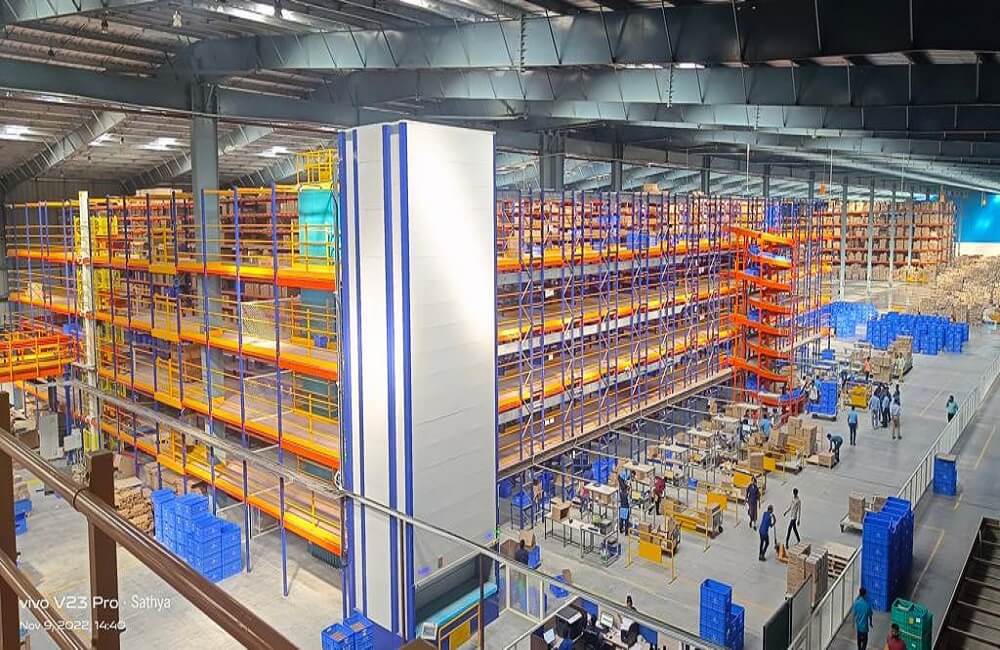Supply chain is the web linking together multiple functions – logistics, production, planning, sales, marketing and procurement. The advent and application of AI across these functions bring agility, predictability, and stability across the entire value stream. For example – while autonomous planning powered by AI enables real time demand sensing and agile production planning – in the logistics space AI enables – dynamic optimisation of routing, freight contracting, vessel sharing reducing costs and environmental impact.
Supply chain technology landscape in 2023
Foundational technologies such as warehouse management systems and transport management systems are now run of the mill and increasingly complex solutions are being offered across the realms of logistics warehousing and planning. The adoption of newer technologies and solutions is happening at a lightning speed. 2023 witnessed digital command centres with micro apps that enable oversight of the entire supply chain- go from experimentation to deployment stage. This adoption drive has been enabled by investments and intent to optimise the supply chain ecosystems.
Order management automation and deviation monitoring through AI has also come a long way. This automation as well as real-time monitoring and tracking of activities alongside integrating data from various sources such as sensors, GPS, and IoT devices- lie at the heart of several logistics startups and innovation hubs assisting both traditional and new age firms.
What lies ahead in 2024 and beyond
Aside from supply chain objectives of cost, quality and service – supply chain leaders now need to focus on a fourth critical objective of future proofing the supply chain to ensure the business itself remains robust and relevant.
Also Read: How logistics will change as technology advances in 2024 and beyond
The new normal also must include the additional trinity of resilience, agility and sustainability. The importance of these attributes cannot be overstated. Any significant supply chain disruption can wipe out more than 3 years of EBITDA. Supply chain risk manifests at the intersection of vulnerability and exposure to unforeseen events. The first step in mitigating that risk is a clear understanding of the organization’s vulnerabilities. Which suppliers, processes, manufacturing /other facilities present potential points of failure in the supply chain? Which critical inputs are at risk from shortages or price volatility?
In 2011, Toyota suffered six months of production loss following a devastating earthquake and subsequent tsunami. But the carmaker revamped its production strategy, regionalised supply chains, and addressed supplier vulnerabilities. When another major earthquake hit Japan in April 2016, Toyota was able to resume production after just two weeks demonstrating the effectiveness of its exceptional resilience and agility measures.
A McKinsey survey found less than 50 per cent senior supply chain leaders aware of the risks faced by their top tier suppliers. Alarmingly only 2 per cent knew about the third-tier suppliers. This is significant since disruptions typically originate in the deeper tiers. Given the increasing diversity and complexity of supply chain and the technological stacks – the supply chain leaders would need to be experts on the entire heat maps of points of vulnerability – both in physical and technological space and have a well-planned mitigation strategy.
The fast-moving, fragmented, consumer-centric world will require a different sort of supply chain. Traditional supply chains sought to achieve stability and minimize costs. Future supply chains will need to be much more dynamic, and be able to predict, prepare, and respond to rapidly evolving demand and a continually changing product and channel mix. In short, agility becomes paramount.
Showcasing agility, Nike leveraged the RFID (radio frequency identification) to track products flowing from its manufacturing locations. During the pandemic in 2020-22 it was able to build up its digital sales by re- routing inventory from physical stores to digital hubs. They optimised inventory -through RFID enabled supply chain as the fulcrum.
The pursuit of agility may require companies to re- evaluate make-versus-buy decisions and also look at digitising production, robotised co-packing to handle a wider mix as well as 3PL solutions for logistics to increase flexibility and proximity to customers.
Skilled and agile employees are also a core requirement of the new age supply chains. They would need to move between processes as business needs change and quickly upskill to manage advance technological systems and dynamically evolving product consumer and tech landscape.
Agility, resilience, and risk management as well as technology solutions are core to the new age supply chains. These priorities can’t be piled on top of existing supply chain setup. They will need to be built in from the foundation and considered in every element of supply chain design, organization, and operation. Re-design is fundamental to future proof the supply chain across platforms and ecosystems.
The author is Head of Operations, IPM India



